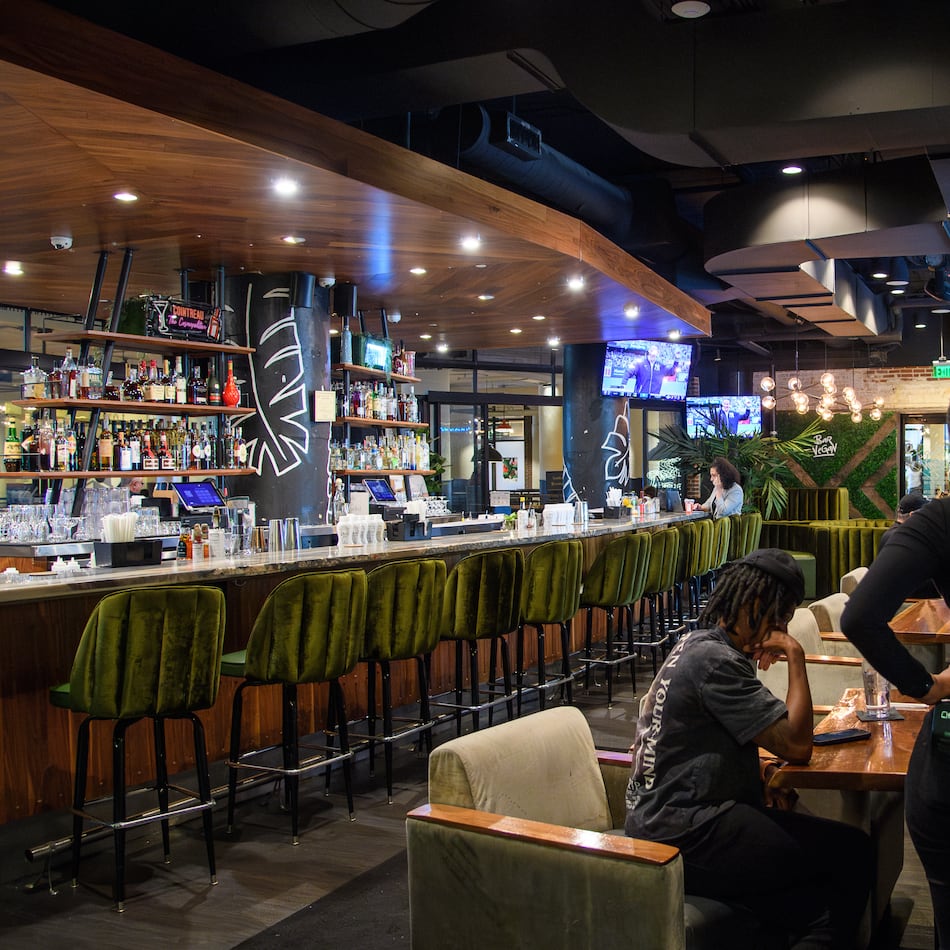A young bar employee we were training recently grabbed a back-bar bottle and exclaimed, “Whoa! We have absinthe?!”
They had some of the same questions that underpin the mythology surrounding the spirit, such as “Isn’t that illegal?” and “Doesn’t it make you hallucinate?”
Let’s dispel those myths.
Absinthe became popular during France’s Belle-Epoque period in the late 19th and early 20th centuries. This also was the time of the decimation of France’s wine industry by the phylloxera pest. As an imbibing alternative, absinthe became fashionable with artists such as Vincent van Gogh and Henri de Toulouse-Lautrec. Cafe culture even created special glassware, slotted spoons and ornate Nouveau water fountains for the ritual of preparing absinthe.
The drink was thought to cause hallucinations, but really, it just was very high-proof liquor. As the wine industry reemerged — and amid a growing temperance movement — absinthe was banned in the U.S. (1912) and France (1915).
One of the culprits in the myth about absinthe being psychedelic is wormwood. The plant is used to add bitterness — not only to absinthe, but also vermouth and other bitter liqueurs. Wormwood does contain a neurotoxin called thujone, but high doses cause seizures and liver failure, not visions. Absinthe was allowed back into the U.S. in 2007, with the stipulation that the thujone levels had to be less than 10 parts per million, or virtually nonexistent.
So, while early absinthe marketing posters promised visions of a green fairy, and movies such as “Bram Stoker’s Dracula” by Francis Ford Coppola have romanticized the beverage, what you essentially get is a high-proof, bittersweet, anise-flavored spirit — one that we quite enjoy.
Here are three readily available absinthes to try:
Herbsaint. This product is from the Sazerac Co., which also makes Sazerac rye and Peychaud’s bitters. All three products are used to make a Sazerac, official cocktail of New Orleans. Herbsaint is an anagram for absinthe (with the addition of an r), which stems from the spirit once being illegal. It is very licorice-forward, with notes of black jelly bean followed by dried herbs and chamomile. Herbsaint also creates a slight numbing sensation, like Chinese mala. It has a dark green-brown color and its rich, sweet flavor is more appropriate for making Sazerac cocktails than sipping with water.
St. George. According to its website, this was the first legal American-made absinthe after the ban was lifted in 2007. This one tastes less like licorice than most French versions do, presenting herbaceous California terroir instead. The folks at St. George pack it with California botanicals, including mint lemon balm, fennel, tarragon and sting nettles. We tasted those fine herbs, along with a little black pepper, agave and subtle smokiness. Since it has no artificial ingredients, the addition of cold water creates a creamy white-green louche (a cloudy or milky appearance), which brings out the woodsy, herbal flavors. Use St. George for a fine absinthe frappe, a tall, refreshing cocktail that combines the spirit with mint, crushed ice and sparkling water.
Grande Absente. Although it is high-proof, the botanical flavor of this version is more subtle, with notes of fresh fennel, rather than licorice, and a hint of pipe tobacco and hay on the nose. At 138-proof, this one was built for your absinthe fountain, as sugar and cold water will improve the experience greatly, and the milky green louche will provide the romantic “green fairy” look.
Sign up for the AJC Food and Dining Newsletter
Read more stories like this by liking Atlanta Restaurant Scene on Facebook, following @ATLDiningNews on X and @ajcdining on Instagram.
About the Author
Keep Reading
The Latest
Featured



